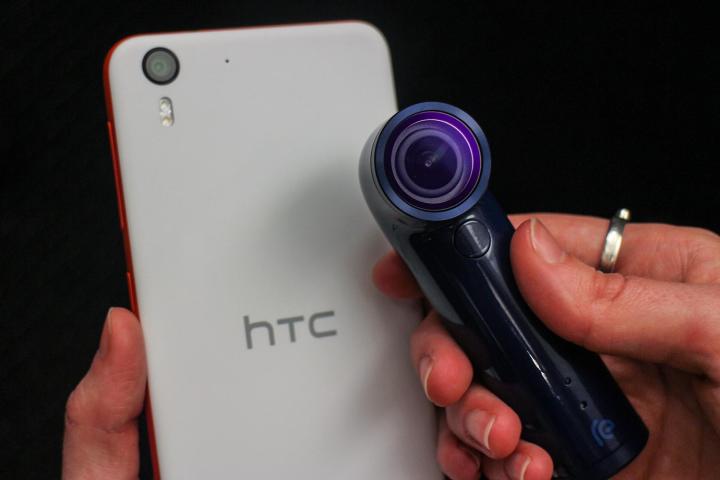
HTC’s new Re Camera, and the Zoe photo app, are compatible (or will be very soon) with not only Android phones made by other manufacturers, but Apple’s iPhone as well. Genius! HTC gets it.
Not locking the Re Camera down will help HTC
While the Re Camera could have been used to try and pull us into HTC’s world, thus potentially generating extra sales for the smartphone division, someone very sensible has realized there are a lot more sales to be had on the other side of the wall. When they’re due for a phone upgrade, maybe some of those buyers will consider an HTC phone. If not, well, at least a Re Camera sale was made, which is better than not selling anything. The decision not to attempt to lock us into an ecosystem could ensure HTC’s survival. At the moment, it doesn’t have an ecosystem. It builds hardware for Google’s Android ecosystem, and getting ideas above its station by trying to create one would be a bad idea.
The most damning evidence that cross platform compatibility works is that even Microsoft does it.
Samsung loves its moat, but the bridge over it only goes one way, and it’s costing them sales. The Gear 2 smartwatch and the Gear Fit fitness tracker are only compatible with Samsung devices. Even the new Gear S smartwatch — which is a standalone phone as well — needs to be linked up with a Samsung phone to work in the first place.
These are accessories that will work with other company’s phones — there are workarounds to prove it — but Samsung doesn’t want it that way. A friend of mine recently went crazy over the look of the Gear S, and would have put an order in right there and then, were it not for having just purchased an LG G3. There’s not a chance this is a unique situation. Samsung thinks people will jump ship over to their products, but in reality, it just loses a sale because switching is often expensive, and always a pain.
Sony is just as bad. Its Lifelog app is fantastic, and a lot of fun when paired with the Smartband. Only recently has it made Lifelog open to other Android devices, yet it still hasn’t produced the app for iOS. Why? It doesn’t want to sell more Smartbands? Yes, there are associated development costs, but we’re talking about Sony, not Dave’s Budget Wearable Tech where the electricity only works on a Wednesday afternoon. HTC has an iOS app for Re Camera, and Zoe is coming for Apple’s operating system too, so there’s really no excuse.
A Re-birth for accessories
It’s not like HTC is the first to see how making an accessory compatible with more ecosystems could be beneficial. Competitive pricing isn’t the only reason people buy the Pebble smartwatch, it’s because it doesn’t matter if your phone runs Android or iOS, or whether you change your mind in a year’s time. It will keep working.
The most damning evidence that cross platform compatibility works is that even Microsoft does it. That massive, often clunking corporation ensures Office is available for almost every OS out there, it produces wireless keyboards that work with any tablet, and is even now writing apps for all major mobile platforms. It’s baffling why this is seen as forward thinking.
Imagine a world where you can buy a Moto 360 which works with your iPhone after downloading an app, just like Google has managed with Glass. Think about not having to check if Samsung’s next fitness band will work with your phone. If this concept seems rather alien, it’s called choice, and it’s sadly lacking in the mobile world.
HTC’s Re camera looks pretty nice, and if it’s a sales success, it may open other manufacturer’s eyes to the potential of producing more open accessories. That would be a Re-birth for the phone industry.
Editors' Recommendations
- Using an iPhone 15 showed me something Android phones get wrong
- I found the perfect accessory to help me stop losing my iPhone
- I’m sick of big, ugly phone cameras — and they’re only getting worse
- Here’s why the FBI says you should never use public phone chargers
- This tiny sensor is about to change your phone camera forever




